Discover 35 hidden attractions, cool sights, and unusual things to do in Santiago de Chile (Chile). Don't miss out on these must-see attractions: La Moneda, Cerro Santa Lucia, and Mercado Central. Also, be sure to include Santiago Metropolitan Cathedral in your itinerary.
Below, you can find the list of the most amazing places you should visit in Santiago de Chile (Santiago Metropolitan).
Table of Contents
La Moneda
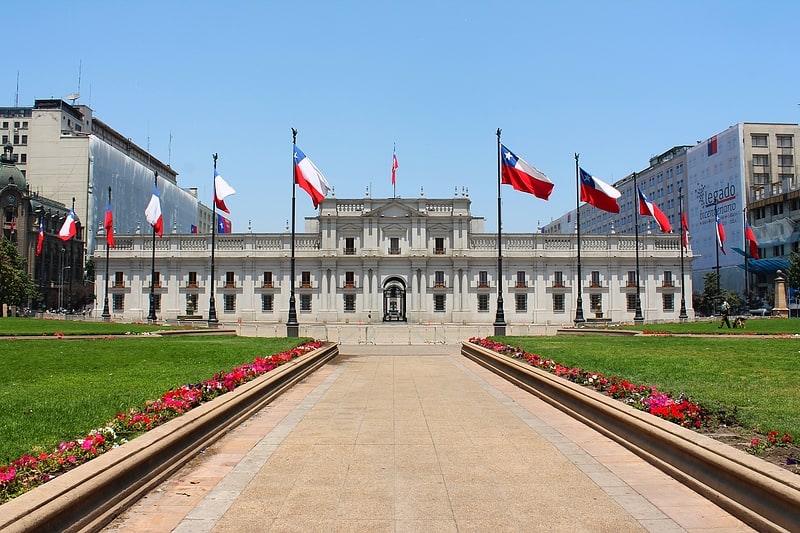
Stately office of Chile's president. Palacio de La Moneda, or simply La Moneda, is the seat of the President of the Republic of Chile. It also houses the offices of three cabinet ministers: Interior, General Secretariat of the Presidency and General Secretariat of the Government. It occupies an entire block in downtown Santiago, in the area known as Civic District between Moneda, Morandé, Alameda del Libertador Bernardo O'Higgins and Teatinos street.[1]
Address: Moneda S/N, Santiago de Chile (Santiago Centro)
Cerro Santa Lucia
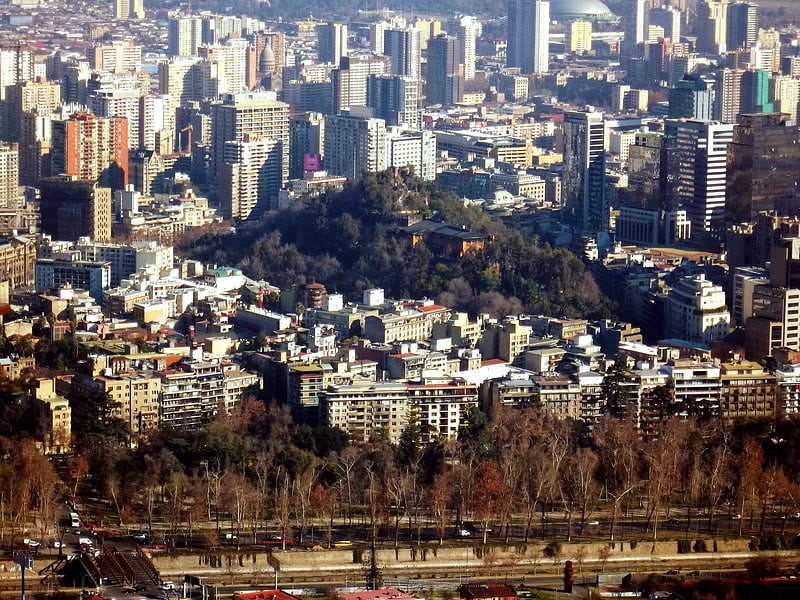
Also known as: Cerro Santa Lucía
Hill with a landscaped park and viewpoint. Santa Lucía Hill, also known in Mapuche as Huelén Hill, is a small hill in the centre of Santiago, Chile. It is situated between Alameda del Libertador Bernardo O'Higgins in the south, Santa Lucía Street in the west and Victoria Subercaseaux on the east. An adjacent metro station is named after it. The hill has an altitude of 629 m and a height of 69 m over the surrounding area. The hill is the remnant of a volcano 15 million years old.
The hill comprises a 65,300 square metre park adorned with ornate facades, stairways and fountains. At the highest point there is a viewpoint popular with tourists visiting the city.[2]
Address: Cerro Sta. Lucia 105, Santiago de Chile (Santiago Centro)
Mercado Central
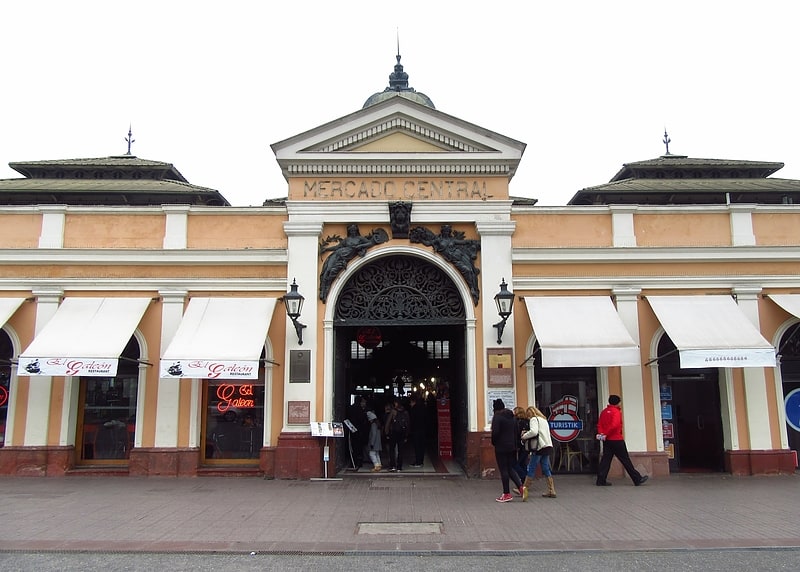
Market in Santiago, Chile. The Mercado Central de Santiago is the central market of Santiago de Chile. It was opened in 1872 and Fermín Vivaceta was in charge of its construction. The market replaced the Plaza del Abasto, which was destroyed by a fire in 1864.
The market is housed in a building in which its main feature is a cast-iron roof and supporting structure, which was fabricated by the Scottish firm R Laidlaw & Sons, Glasgow. Edward Woods and Charles Henry Driver took part in the design of the structure.
The metal structure stands on a square base and features a vaulted ceiling. Its intricate roof design consists of a central pyramidal roof crowned by a domed tower, which is surrounded by 8 smaller roofs with a two-tier design. The structure is enclosed by a masonry building.[3]
Address: San Pablo, Santiago de Chile (Santiago Centro)
Santiago Metropolitan Cathedral

Also known as: Catedral metropolitana de Santiago
Cathedral in Santiago, Chile. Santiago Metropolitan Cathedral is the seat of the Archbishop of Santiago de Chile, currently Celestino Aós Braco, and the center of the archdiocese of Santiago de Chile. Construction of the neoclassical cathedral began in 1753 and ended in 1799. The architect was the Italian Gioacchino Toesca. Further alterations ordered at the end of the 19th century gave it its present appearance. Previous cathedrals in the archdiocese had been destroyed by earthquakes.
The cathedral, located in the city's historic center, faces the northwest corner of Santiago's Plaza de Armas and stands near the Palacio Arzobispal de Santiago, the administrative center for the archdiocese. The cathedral is also close to the Parroquia El Sagrario, a Catholic temple and a Chilean national monument.
Santiago Metropolitan Cathedral is of a Baroque style, with many ornaments, frescos, and gilded columns. Showing that architecture has layers of history, the two towers of the cathedral were added almost a whole century later.
This cathedral being built 220 years ago didn't have the kind of technology or considerations that modern building today have. the main consideration being earthquakes. Since Chile is on the Atacama fault line, it experiences quite a lot of earthquakes. Large masonry buildings like the Metropolitan Cathedral weren't built with earthquake considerations, and since masonry has low tensile strength the building suffered damages and destruction due to the earthquakes. Due to all the destruction and rebuilding/remodeling the cathedral became a national historic monument in 1951.
Because of all the damage due to earthquakes, tests were done to the structure of the building to see if any structural updates were necessary, which there were. Tests were needed to be done to carry out any sort of renovations or updates of the cathedral.[4]
Address: Plaza de Armas, 8320147 Santiago (Santiago Centro)
Museo Nacional de Historia Natural
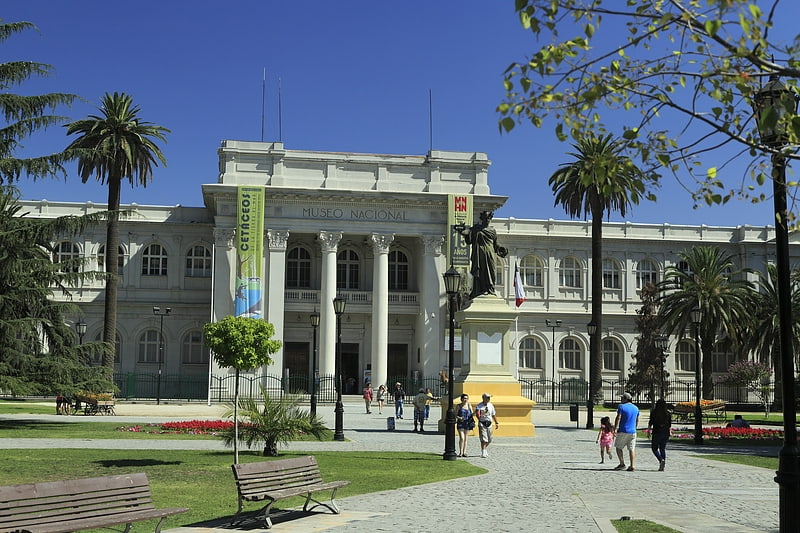
Exhibits on Chilean nature and culture. The Chilean National Museum of Natural History is one of three national museums in Chile, along with the Museum of Fine Arts and the National History Museum. It is located in Quinta Normal Park.[5]
Address: Matucana 520, 9170023 Santiago (Santiago Centro)
Vega Central
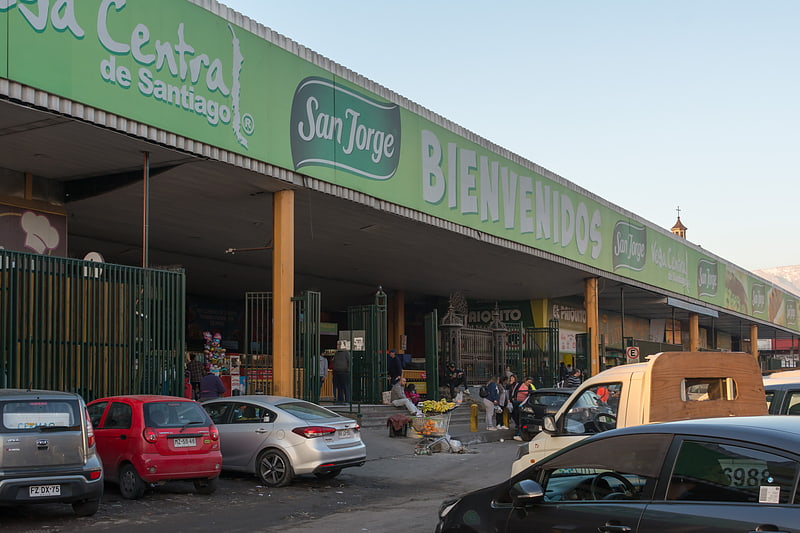
Fresh food market in Recoleta, Chile. La Vega Central, also known as the Feria Mapocho, is a market located at the far south of Recoleta commune in Santiago de Chile, almost at the north bank of the Mapocho River. A wide variety of products are sold in its surrounds, principally fresh fruit and vegetables from the Chilean Central Valley. La Vega Central is also home to over 500 dairy, meat, goods and merchandise stores, and offers a variety of Chilean cuisine. Today, hundreds of thousands of people pass daily through La Vega's 60,000 square meters of stalls. La Vega Central has now achieved iconic status in Chile's capital. A long-time vendor at the market was quoted as saying, “Markets nowadays compete by using marketing, but La Vega has never had to resort to this. It subsists on its own creation and that is its magic.”[6]
Address: Davila Baeza 700, 8320000 Santiago (Santiago Norte)
Basilica of Our Lady of Perpetual Help
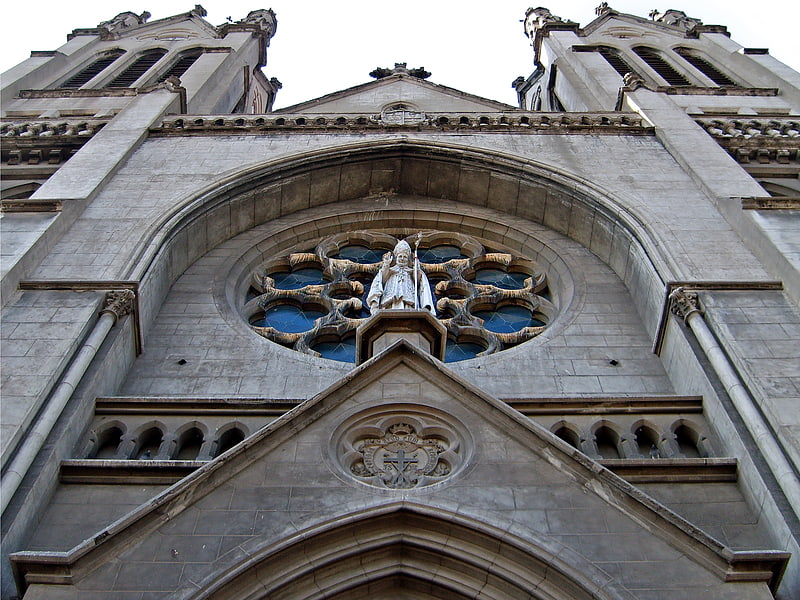
The Basílica de Nuestra Señora del Perpetuo Socorro is a Catholic Church located in the comuna of Santiago, in the capital of Chile. It was designed in the Gothic Revival style by the religious architects Gustave Knockaert —known as «Brother Gerardo»— and Huberto Boulangeot. They were members of the Redemptorists.
The foundation stone was blessed and laid on 12 December 1904. The ownership of the land to build the church had been transferred from the Ugarte family by public deed on 26 April 1876.
Gustave Knockaert (1845-1928), a Belgian priest who previously had designed church buildings for his congregation in Madrid, Paris, Mulhouse and Les Sables-d'Olonne, was appointed to form a team of 15 architects. Among those was Huberto Boulangeot, who was designated as construction manager for the church project.
The construction of the church began in 1906, coinciding with the Valparaíso earthquake, which caused plans to be modified for additional structural reinforcement. The church was built with reinforced concrete, planned by the American engineer Juan Tonkin. Another collaborator was the brother Joaquín Chardin, a specialist in cement work, who contributed to the placing of the pointed arches, characteristic elements of the Gothic architecture. He also made the ornamental door of the sacristy, made from encina wood, and the coat of arms of the congregation that was carved on front entrance.
Garden features of the basilica were commissioned to brother Constancio, which included the gardens, greenhouse and the pond.
The blocks used for the interior columns of the church are from monolith formations and were carried from San José de Maipo using ox-drawn carts. These pieces were transported intact, between 1906 and 1907, to be carved and polished at the construction site. Stone was also extracted from San José de Maipo to make the bases, plinths and the steps.
The importation of goods was limited by the saltpetre economic crisis and World War I. As a result, that 8 of the 28 originally planned stained glasses and a rose window were never purchased, leaving those openings with bare glass.
The interior of the basilica includes confessionals made from roble americano wood and a French pipe organ made by Neuville Frères in 1897, which was, subsequently, declared a Monumento Histórico. The high altar was partially made in Belgium with marble and bronze, and was completed in Chile with lingue and American oak woods. Its centre includes an image of Our Lady of Perpetual Help, a replica of one found in the redemptorist church of Rome. The altars of Saint Alphonsus and of Our Lady of Mount Carmel were designed by the brother Huberto with bas-reliefs by the Spanish artist José Soria. The basilica is 68 metres (223 ft) long and 30 metres (98 ft) wide. The highest spire towers reach 55 and 65 metres (180 and 213 ft). The church has five naves, but only three of them were completed, the other two are closed and used as a hallway and a warehouse. The roof tiles were made from copper and lead.
In 1919, the Basilica was blessed with a Pontifical Mass headed by the then archbishop of Santiago, Crescente Errázuriz. On that day and in an exceptional way, the Argentine musician Domingo Santa Cruz celebrated a Te Deum.
The church was declared a Minor Basilica by the Holy See in 1926, being consecrated as such by the Papal ambassador Benedicto Marsella that same year.[7]
Address: Avenida Almirante Blanco Encalada 2950, 8370492 Santiago (Santiago Centro)
San Cristóbal Hill
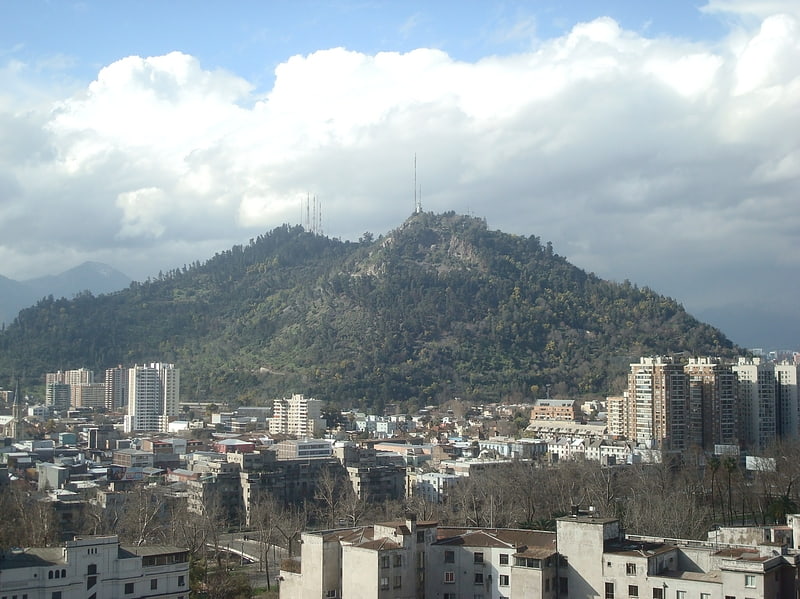
Also known as: Cerro San Cristóbal
Hiking spot with panoramic city views. Cerro San Cristóbal is a hill in northern Santiago, Chile. It rises 850 m AMSL and about 300 m above the rest of Santiago; the peak is the third highest point in the city, after Cerro Manquehue and Cerro Renca. Cerro San Cristóbal was named by the Spanish conquistadors for St Christopher, in recognition of its use as a landmark. Its original indigenous name is Tupahue.[8]
Address: Cerro San Cristóbal, Santiago de Chile (Santiago Oriente)
Museo de la Memoria y los Derechos Humanos
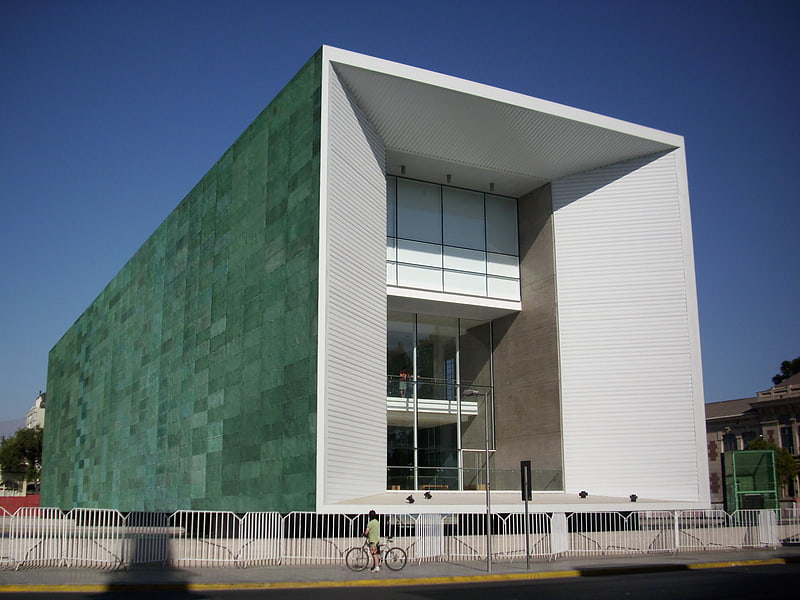
Museum in Santiago, Chile. The Museum of Memory and Human Rights is a Chilean museum located in Santiago, dedicated to commemorate the victims of human rights violations during the civic-military regime led by Augusto Pinochet between 1973 and 1990. It was inaugurated by former President Michelle Bachelet on January 11, 2010 as part of government's commemoration of the bicentennial of Chile.[9]
Address: Avenida Matucana 501, 8350392 Santiago (Santiago Centro)
Museo Nacional de Bellas Artes
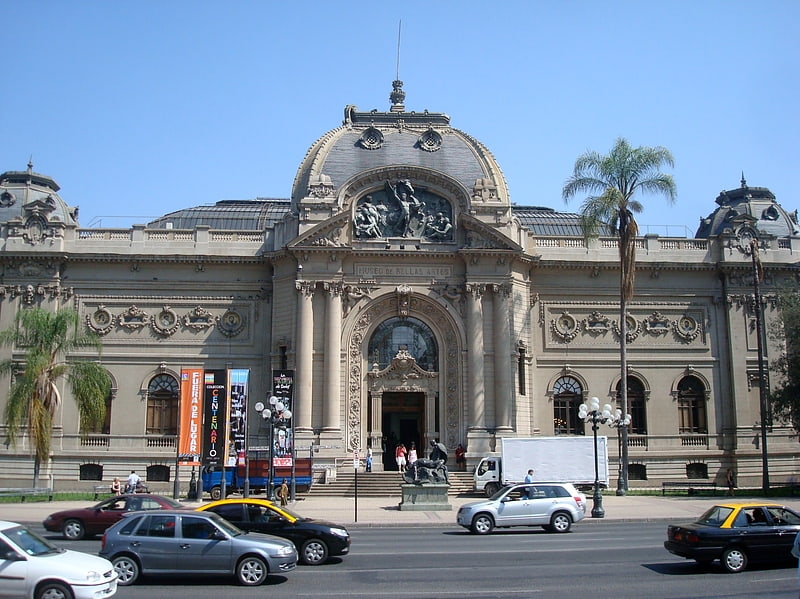
Contemporary art in a historic palace. The Chilean National Museum of Fine Arts, located in Santiago, Chile, is one of the major centers for Chilean art and for broader South American art. Established in 1880, the organization is managed by the "Artistic Union".
The current building, the "Palace of the Fine Arts" (el Palacio de Bellas Artes), dates to 1910 and commemorates the first centennial of the Independence of Chile. It was designed by the Chilean architect Emile Jéquier in a full-blown Beaux-arts style and is situated in the Parque Forestal of Santiago. Behind it is located the Museum of Contemporary Art (Museo de Arte Contemporáneo) of the University of Chile, in which is also located the old School of Fine Arts (Escuela de Bellas Artes).[10]
Address: Jose Miguel de la Barra 650, 8320000 Santiago (Santiago Centro)
Chilean National Zoo

Also known as: Zoológico Nacional de Chile
Zoo with native and exotic animals. The Chilean National Zoo is a 4.8-hectare zoo that was founded in 1925 in Santiago, Chile. Located at the foot of San Cristóbal Hill in what is known as the Santiago Metropolitan Park, the zoo is home to thousands of animals representing 158 species. Unique exhibits feature Chilean native animals and birds including rare and endangered species.
The Chilean National Zoo has a dual focus: to conserve and research species held at the zoo, and to educate and provide activities for the visiting public.[11]
Manuel Foster Observatory

The Manuel Foster Observatory, originally known as the D. O. Mills Observatory, is an astronomical observatory constructed on Cerro San Cristóbal near Santiago, Chile in 1903. It is located in the Santiago Metropolitan Park and became a national monument in 2010. The main telescope is a cassegrain reflector with a 0.93 m aperture and an equatorial mount. It is housed inside a rotating dome.[12]
Centro Cultural Palacio de La Moneda
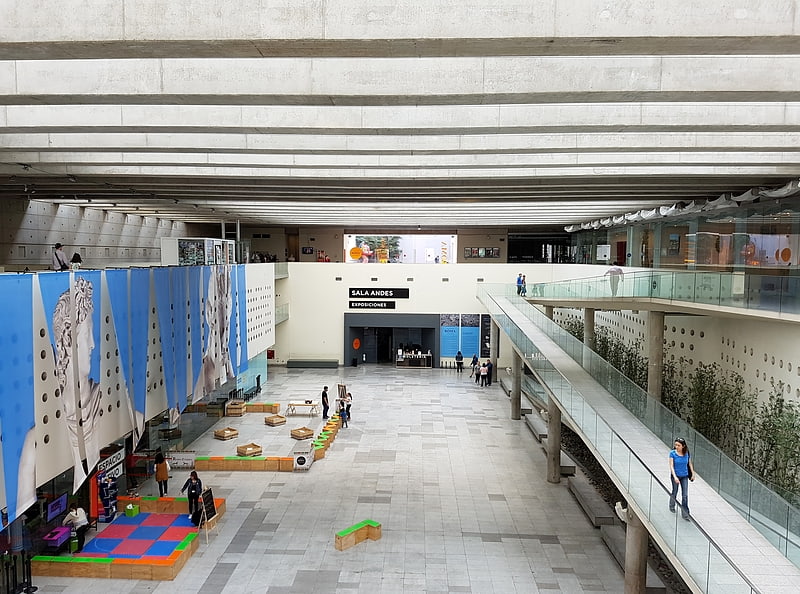
Also known as: Centro Cultural La Moneda
Archive in Santiago, Chile. Centro Cultural Palacio de La Moneda is a cultural facility located in Santiago, Chile, under the Citizenry Square, in the southern façade of the Palacio de La Moneda. It is intended to place the Chilean capital in the international cultural circuit, allowing participative and formative access for all citizens to the cultural and audiovisual richness of the nation.
It was built between November 2004 and January 2006 and was designed by Chilean architect Cristián Undurraga. It contains 7,200 m², with two main exhibition halls, each 620 m² in area.
This project is part of the bigger Bicentennial Project, in preparation for the 200th anniversary of Chile's Republican Life. As part of this plan, many public buildings, parks, libraries, airports, and boulevards have been built or improved.
Also this center houses other minor exhibition halls: the Centro de Documentación de las Artes ("Arts Documentation Center", with information and resources concerning modern and contemporary art), Cineteca Nacional ("National Film Archive"). The program for the movie showings at the National Film Archive can be found here. The museum also has a Digital Laboratory (for film restoring and digitallization), Restaurants, Café, and a small Shop. There is a new art and technology exhibition room.
There is a parking garage under the space with room for 564 cars on 4 levels, with pedestrian and vehicular access on Morande street and Teatinos street.
The inaugural exhibit (from January to July 2006) is México: del Cuerpo al Cosmos ("Mexico: from Body to Cosmos"), featuring about 200 pieces of ancient Mexican art.
If you plan ahead, you can get a free guided tour of the museum. On the weekends only the general public can receive the tour. On the week days, social organizations, students, and companies can organize a guided tour, as well as the general public.[13]
Address: Plaza de la Ciudadanía n° 26, Santiago de Chile (Santiago Centro)
Palacio de la Real Audiencia de Santiago
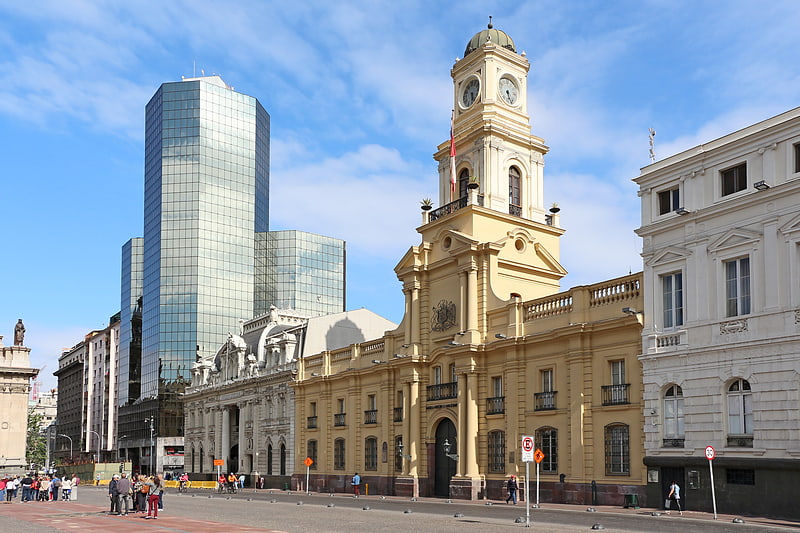
Building. The Palacio de la Real Audiencia de Santiago is a building located in the north central village of the Plaza de Armas in Santiago, Chile. The building dates back to 1808 and houses, since 1982, the National History Museum of Chile.
The building was built between 1804 and 1807 to serve as the home for the royal courts of justice. It was the work of Juan Goycolea, a pupil and disciple of the Italian-born Joaquin Toesca who had designed the nearby La Moneda Palace and the east facade of the Cathedral during the last two decades of the 18th century. The courts were there for two years until Chile's first government junta, in 1810, assembled to replace the Spanish governor. Eight years later the Chilean Declaration of Independence was solidified and the building served as the first meeting place for the new congress. It served as the seat of government until 1846, until President Manuel Bulnes moved to La Moneda Palace.[14]
Address: Plaza De Armas 951, 8320096 Santiago (Santiago Centro)
Movistar Arena
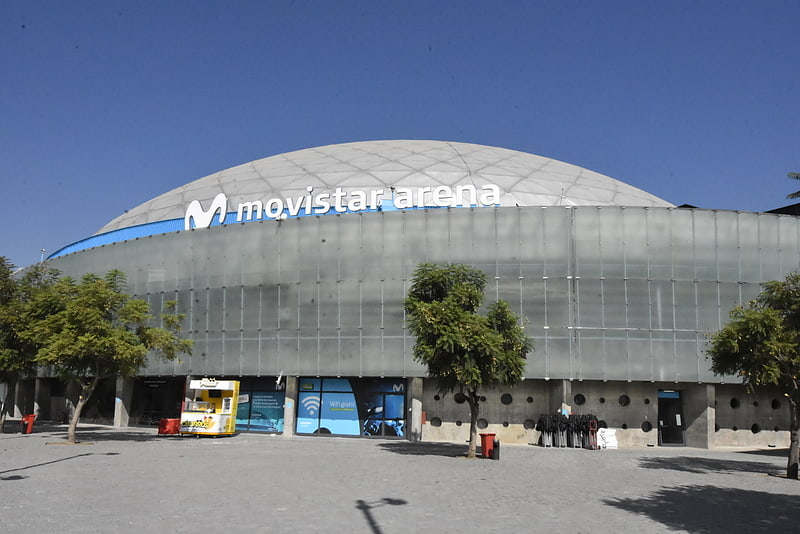
Arena in Santiago, Chile. Movistar Arena is a 17,000-seat multi-purpose indoor arena in Santiago, Chile. It is located inside O'Higgins Park, in downtown Santiago. Its main structure was built in 1956, but it remained unfinished until 1999 when the roof was completed.
Buyer Peter Hiller opened it on April 15, 2006 as Arena Santiago with a seat-capacity of 12,000. Telefónica's cell phone division Movistar bought the stadium's naming rights, changing its name on October 6, 2008, while also expanding its capacity by 5,000 seats. It is one of the largest multi-purpose arenas in South America, with a total surface is 44,000 m². An additional 3,000 seats can be placed over the court during concerts, boosting the total capacity to 17,000 seats.[15]
Address: Avenida Beaucheff 1204, 8370951 Santiago (Santiago Centro)
La Chascona

Museum in Providencia, Chile. La Chascona is a house in the Barrio Bellavista of Santiago, Chile, which was owned by Chilean poet Pablo Neruda. La Chascona reflects Neruda's quirky style, in particular his love of the sea, and is now a popular destination for tourists. Neruda began work on the house in 1953 for his then secret lover, Matilde Urrutia, whose curly red hair inspired the house’s name; chascona is a Chilean Spanish word of Quechua origin referring to a wild mane of hair. In the house, there is a painting given to Urrutia by Neruda depicting a two-faced Urrutia, one face depicting the Urrutia as the singer the public knew, and the other depicting the lover Neruda knew. The painting also has a hidden image; the profile view of Neruda's face hidden in her hair, showing their continuous secret relationship. Urrutia would become the poet’s third wife and she took on the task of restoring the house following the poet’s death in 1973, when La Chascona suffered damage during the military coup.
La Chascona is managed today by the Pablo Neruda Foundation.[16]
Address: Fernando Marquez De la Plata 0192, 8320000 Santiago (Santiago Oriente)
Estadio Monumental David Arellano

Also known as: Estadio Monumental
Stadium in Macul, Chile. The Estadio Monumental is a football Stadium in Macul, south-east of the centre of the Chilean capital Santiago. It serves as the home ground of Colo-Colo, and on occasions also for other clubs and the national football team. The stadium has a current spectator capacity of 47,347. The actual playing field is named after David Arellano, the founder of Colo-Colo; therefore, on occasions the whole stadium is referred to as Estadio Monumental David Arellano.
The stadium was first opened in 1975 with a double-header in front of 25,599 people. In the first match Santiago Morning and Santiago Wanderers drew 1-1 and in the main event Colo-Colo defeated Deportes Aviación 1-0, Carlos Orellana being the scorer. However, the stadium proved unsuitable for ongoing use, and therefore only five more matches took place there for the time being.
Completed in its current form in 1989, it was reopened in September of that year with a match between Colo-Colo and CA Peñarol from Uruguay, which the hosts won 2-1, thanks to goals by Marcelo Barticciotto and Leonel Herrera. The official capacity of the stadium then was between 62,500 and 65,000 spectators. The highest ever recorded attendance when 69,305 spectators saw a league match between Colo-Colo and Club Universidad de Chile in 1992. In the 2016-17 season, Colo-Colo drew an average home league attendance of 21,509 for the Apertura and 23,229 for the Clausura. The stadium was in 1991 home to the second Copa Libertadores final, won by Colo-Colo 3-0, making it the sole Chilean club to win the trophy.
Accidents, including a fatality in 1993, instigated various modernisations which led to a reduction of the capacity to the current 47,000 spectators.
The stadium is also rented out to club Santiago Morning and other Chilean teams that require holding games on the international tournament scale. It has also been used by the Chile national football team when the Estadio Nacional, the main football stadium of the country, is unavailable. The American rock band Pearl Jam played at the stadium on November 16, 2011, as part of their 20th anniversary tour. The hard rock band Guns N' Roses performed at the stadium during their Not In This Lifetime...Tour on September 29, 2017.
Its principal tenant and owner is the corporate entity Blanco y Negro that runs Colo-Colo and for which Chilean billionaire and President Sebastián Piñera is a major shareholder.[17]
Address: Av. Marathon 5300, 8320000 Santiago (Santiago Oriente)
Santiago General Cemetery
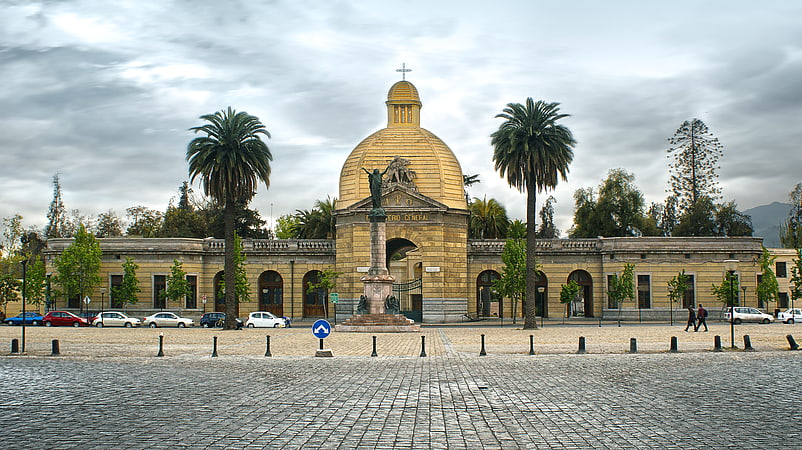
Also known as: Cementerio General de Santiago
Storied cemetery with famous graves. The Santiago General Cemetery in Santiago, Chile, is one of the largest cemeteries in Latin America with an estimated two million burials. The cemetery was established in 1821 after Chile's independence when Bernardo O'Higgins inaugurated the Alameda de las Delicias along the old course of the Mapocho River. O'Higgins set aside more than 85 hectares of land for the foundation of what became a magnificent grounds filled with ornate mausoleums surrounded by palm and leaf trees set amidst lush gardens and numerous sculptures, which have been estimated be 237. The cemetery, which is located northwest of Cerro Blanco, serves as a true urban park for Santiago.
This cemetery is the final resting place for at least 172 of the most influential people in Chile, including all but two of the deceased Presidents of Chile, the exceptions being Gabriel González Videla and Augusto Pinochet. One of the most visited memorials is that of former President Salvador Allende who had been buried in the Santa Ines cemetery at Viña del Mar following his suicide in the 1973 coup d'état. With the democratic changes that began in the 1990s, Allende was exhumed and his remains were transported in a solemn procession through the streets of Santiago to a place of honor in the Cementerio General de Santiago. The cemetery also has a memorial to the people that were 'disappeared' during the dictatorship of Augusto Pinochet that ousted President Allende.
The gatehouse that serves as the main entrance to the cemetery is crowned by a dome, which acts as a terminating vista for La Paz Avenue. This entrance is preceded by the Plaza La Paz, a semicircular plaza whose curved portion is framed by two exposed brick arcades. At the center of the square stands a monument dedicated to the people who died in the Church of the Company Fire. The cemetery can be accessed via Cementerios metro station.
The historical portion of the cemetery was designated as a national monument in 2010, reaching the same status as Patio 29.[18]
Address: Avenida La Paz, 8431579 Santiago (Santiago Norte)
Metro Santa Ana
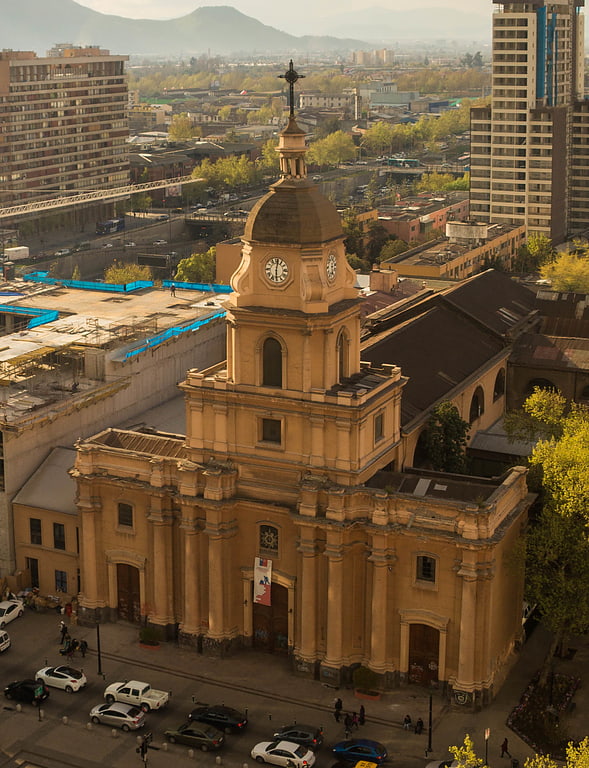
The Iglesia de Santa Ana is a Catholic church in downtown Santiago de Chile. It is located at the northwest corner of Catedral and San Martín streets. The church was declared as a National Monument of Chile in 1970, within the category of Historic Monuments. Santa Ana metro station is named after the church.[19]
Los Dominicos Village
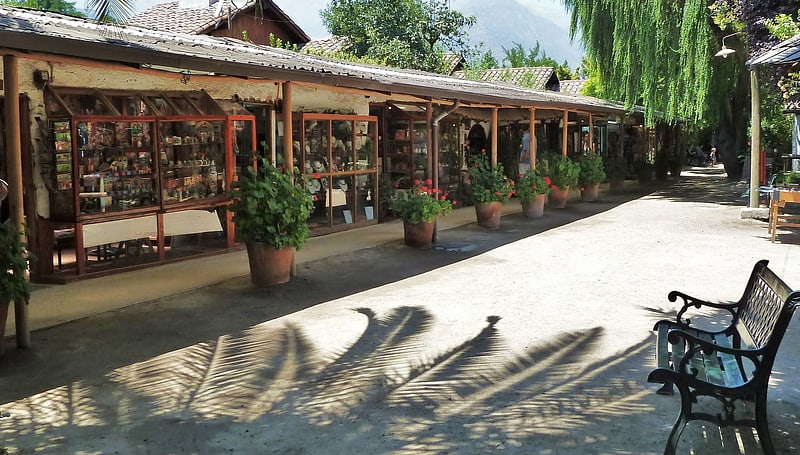
Pueblito Los Dominicos is a crafts market and popular tourist shopping destination in a heritage zone of Santiago, Chile. It is located at the end of Avenida Apoquindo in Los Dominicos Park, to the side of San Vicente Ferrer Church.[20]
Address: The Map Shows a Location That Is Many Miles From Here Is It, 8320000 Santiago (Santiago Oriente)
Parque Almagro
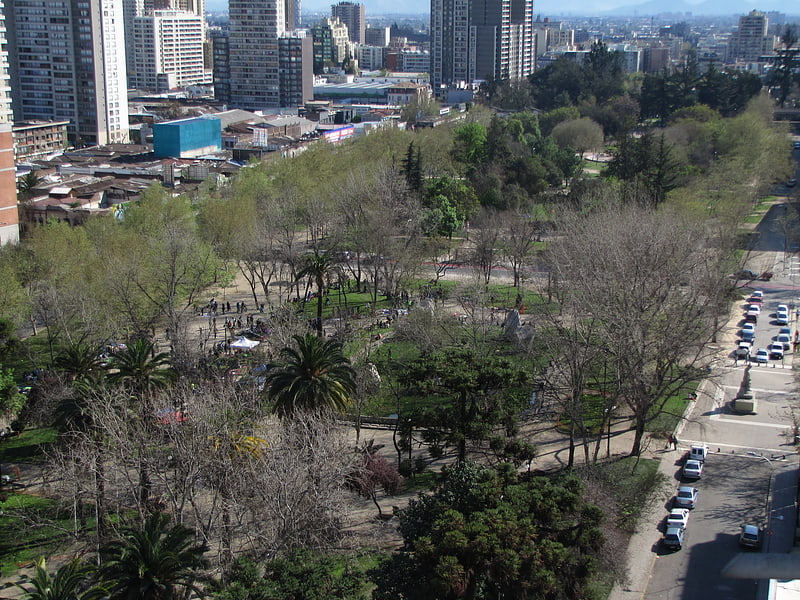
Park in Santiago, Chile. Almagro Park is an urban park in the city of Santiago, Chile. The Basílica de los Sacramentinos is situated on the east end of the park, while the Palacio Cousiño is located on its west end. The park marks the north end of the Paseo Bulnes. Parque Almagro metro station is named after the park and the Toesca metro station is located a short walk from the park.
The park began to take form in 1982 as part of a project to consolidate the Civic District of Santiago. The park covers 12 ha (30 acres) and is built on land originally reserved for a new national congress building of Chile.[21]
Address: Nataniel Cox, Santiago de Chile (Santiago Centro)
Santiago Metropolitan Park
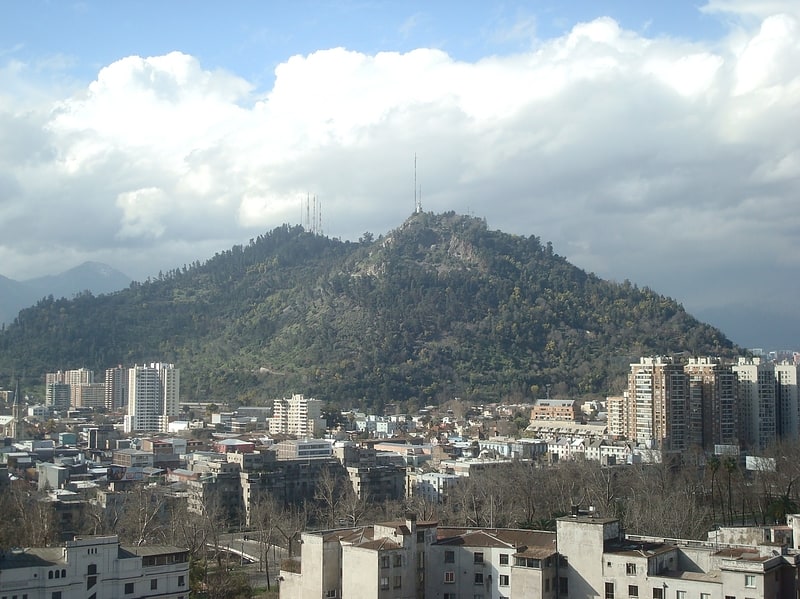
Also known as: Parque Metropolitano de Santiago
Park in Chile. The Santiago Metropolitan Park is an urban park located within the city of Santiago, capital of Chile. Consisting of the San Cristóbal, Chacarillas and Los Gemelos hills, and the areas of Tupahue, Lo Saldés, Pirámide and Bosque Santiago, the park is located between four communes of Santiago – Huechuraba, Providencia, Recoleta and Vitacura – and covers around 722 hectares, making it the largest urban park in Chile and one of the largest in the world.
The Santiago Metropolitan Park also maintains 16 Urban Parks distributed throughout 13 communes in Santiago, a total area of almost 150.1 hectares. The maintenance work is carried out through “Urban Parks’ Conservation, Maintenance and Safety” projects which involve cleaning, irrigation, replantation and management of vegetal species, maintenance of urban equipment, sanitation control, weed control, fertilization and safety among other activities.
The park was created in April 1966, when incorporating the Chilean National Zoo and the services of San Cristóbal Hill, and is managed by the Ministry of Housing and Urban Development. In September, 2012, the Chilean government launched a plan to significantly refurbish and expand the park between 2012 and 2016, a plan which includes building new footpaths, planting 100,000 more trees and expanding the National Zoo.[22]
Plaza de Armas

Historical place in Santiago, Chile. The Plaza de Armas is the main square of Santiago, the capital of Chile. Plaza de Armas metro station is located under the square. Surrounding the square are some historic buildings, including the Metropolitan Cathedral of Santiago, Central Post Office Building, Palacio de la Real Audiencia de Santiago, and the building that serves as the seat of local government for Santiago, which was formerly occupied by the Cabildo of the city before being remodeled. There are also other architecturally significant buildings that face the square, including the Capilla del Sagrario, the Palacio arzobispal, the Edificio Comercial Edwards, and the Portal Fernández Concha. The Casa Colorada, the Cuartel General del Cuerpo de Bomberos de Santiago and the Museo Chileno de Arte Precolombino are located a short walk from the square.[23]
Pereira Palace
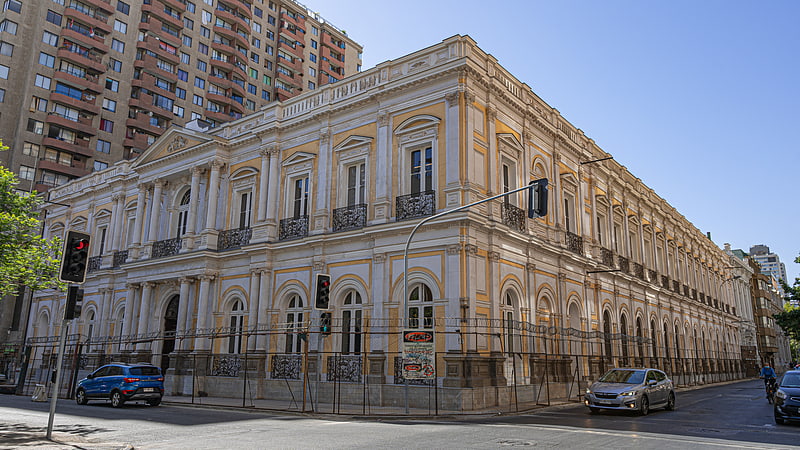
Open air museum in Santiago, Chile. The Palacio Pereira is a historic neoclassical mansion located at the corner of San Martín and Huérfanos streets, in downtown Santiago, Chile. Built in the second half of the 19th century, it was declared a Historic Monument in 1981, but its deterioration was not stopped and remained abandoned for several decades.
In 2011, under the first presidency of Sebastián Piñera, the government bought the building to convert it into the headquarters for the Dirección de Bibliotecas, Archivos y Museos (DIBAM) and the Consejo de Monumentos Nacionales (CMN). The following year was made a call for an open architectural competition for a preliminary restoration project and the design of an annex building. The winning project, proposed by the firm led by Cecilia Puga, was announced in December 2012, during the XVII Biennale of Architecture. In 2014 the architectural design by Puga, Alberto Moletto and Paula Velasco was completed. The planned date of completion of the project is December 2019.
The palace, along with the Former National Congress Building, will be occupied by members of the Convención Constitucional, the group in charge of Chile's constitutional redrafting after the national plebiscite regarding this issue held in October 2020.[24]
Address: Huérfanos, Santiago de Chile (Santiago Centro)
Iglesia San Ignacio de Loyola
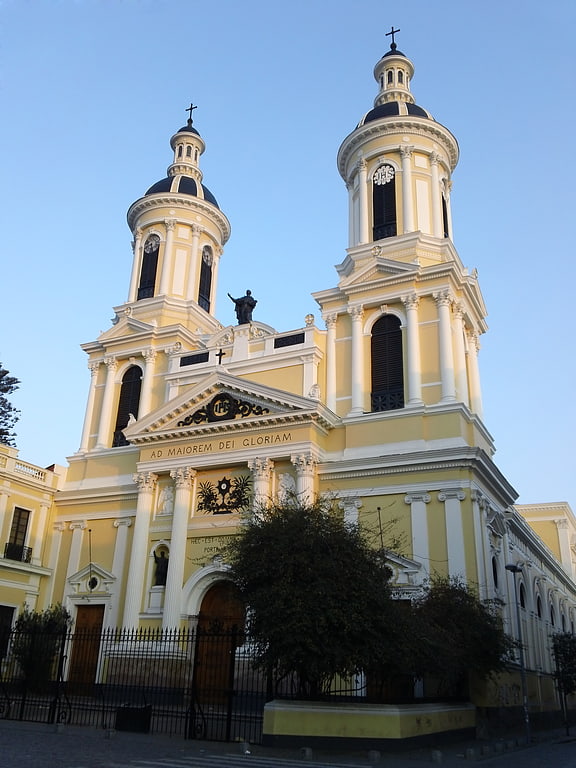
The iglesia San Ignacio, also known as iglesia del Colegio de San Ignacio, is a Roman Catholic church founded by the Society of Jesus in Santiago, Chile. It is next to the Colegio San Ignacio, and was declared as a National Historic Monument in 2002.[25]
Iglesia de la Recoleta Franciscana
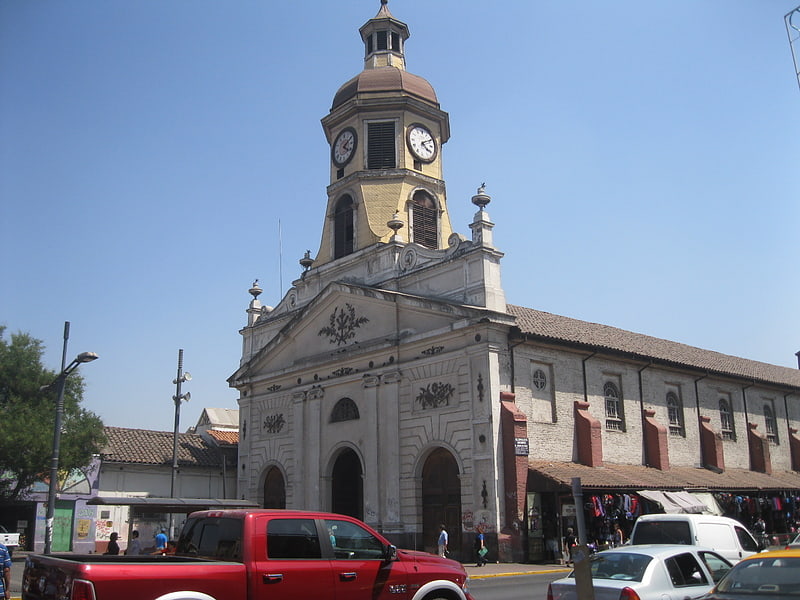
Church in Recoleta, Chile. The Iglesia de la Recoleta Franciscana is a church in Recoleta, Santiago de Chile. The church was declared as a National Monument in 1973.[26]
Casa Colorada
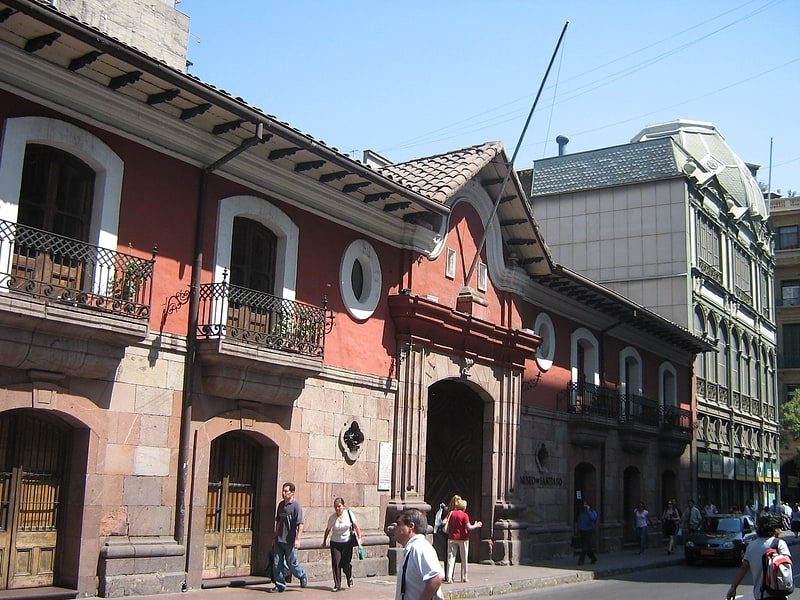
Museum in Santiago, Chile. Casa Colorada is a colonial house built located in Santiago, Chile. It was built in 1769, by Joseph de la Vega for Mateo de Toro y Zambrano, and currently houses the Museo de Santiago. The house has a clay-tiled roof, balconied windows, and deep-red walls, and consists of two storeys.
Visitors walk through the homes two large patios to get the Museo de Santiago, which occupies five of Casa Colorada's rooms. The museum explores Santiago's history from the Pre-Columbian era to contemporary times.[27]
Address: Merced 860, Santiago de Chile (Santiago Centro)
Parque por la Paz Villa Grimaldi
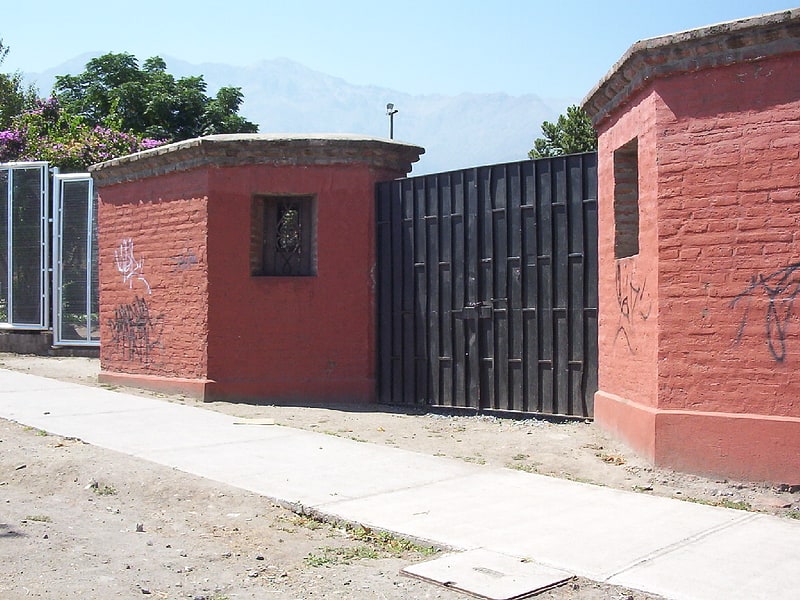
Also known as: Villa Grimaldi
Heritage museum in Peñalolén, Chile. Villa Grimaldi is considered the most important of DINA’s many complexes that were used for the interrogation and torture of political prisoners during the governance of Augusto Pinochet. It is located at Avenida José Arrieta 8200 in Peñalolén, on the outskirts of Santiago, and was in operation from mid-1974 to mid-1978. About 4,500 detainees were brought to Villa Grimaldi during this time, at least 240 of whom "disappeared" or were killed by DINA. It was also the location of the headquarters of the Metropolitan Intelligence Brigade. The head of Villa Grimaldi during the Pinochet dictatorship, Marcelo Moren Brito, was later convicted of crimes against humanity and sentenced to more than 300 years in prison.[28]
Address: José Arrieta 8200, Santiago de Chile (Santiago Oriente)
Basílica del Corazón de María
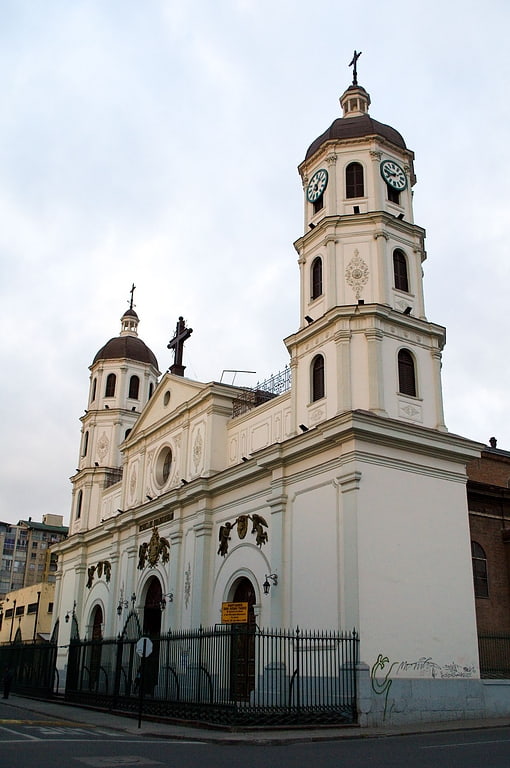
The Basilica of the Heart of Mary is a Catholic Church in the city of Santiago, Chile. Built by the Claretians, it was inaugurated on 7 December 1879, being designated as a basilica in 1929 and as a National Monument of Chile on 14 January 1987.[29]
Palacio Cousiño
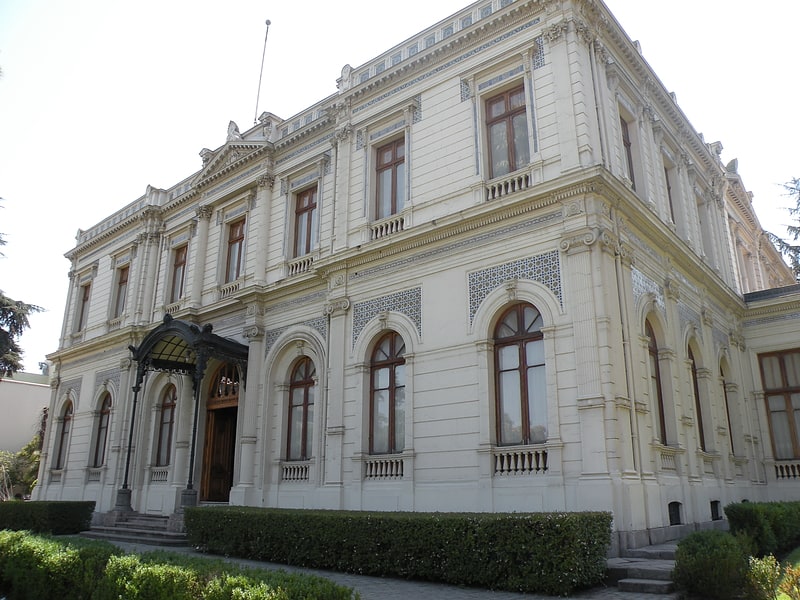
Palace in Santiago, Chile. The Palacio Cousiño is a palace that was designed and built for Isidora Goyenechea, widow of Luis Cousiño, who in turn was son of Matías Cousiño. It is located at 438 Dieciocho Street in Santiago, Chile.
The palace was designed by architect Paul Lathoud, who also designed the building housing the Chilean National Museum of Natural History. The palace was constructed in Second Empire Style and completed in 1878.[30]
Address: Dieciocho 438, Santiago de Chile (Santiago Centro)
Iglesia de la Recoleta Dominica
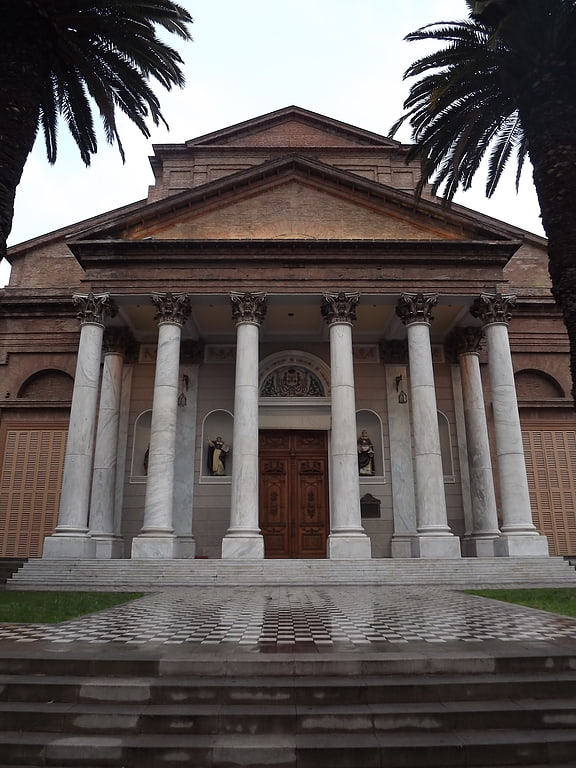
The Iglesia y convento de la Recoleta Dominica is a church and convent in Recoleta, Santiago de Chile. The church and convent were declared as a National Monument in 1974.[31]
Address: Avenida Recoleta, Santiago de Chile (Santiago Norte)
San Francisco Church
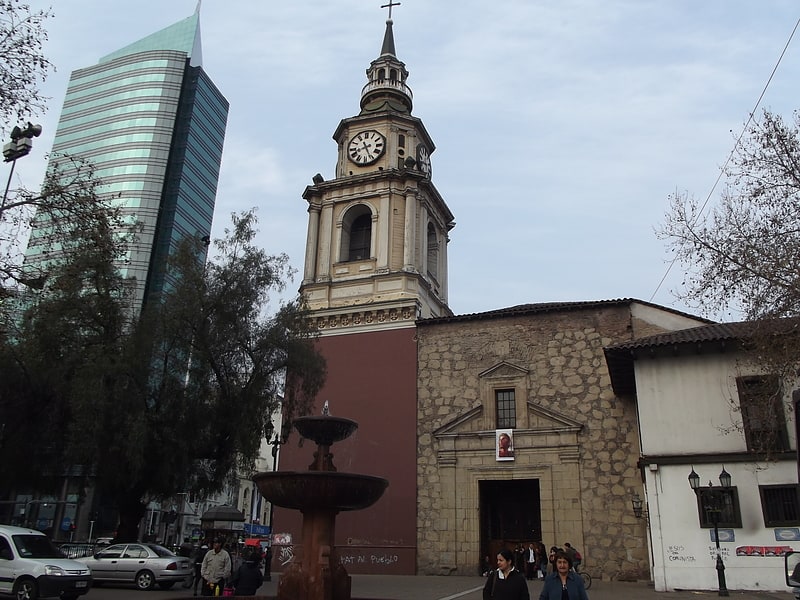
Also known as: Iglesia de San Francisco
Church in Santiago, Chile. The San Francisco Church is a Franciscan church on Avenida Libertador General Bernardo O'Higgins, in the downtown of Santiago de Chile. The church, along with the adjacent convent, is one of the oldest colonial-era buildings in the country. It has been resistant to about 15 earthquakes of magnitude over 7.[32]
Address: Av. Libertador Bernardo O´Higgins 834, Santiago de Chile (Santiago Centro)
Santiago Museum of Contemporary Art
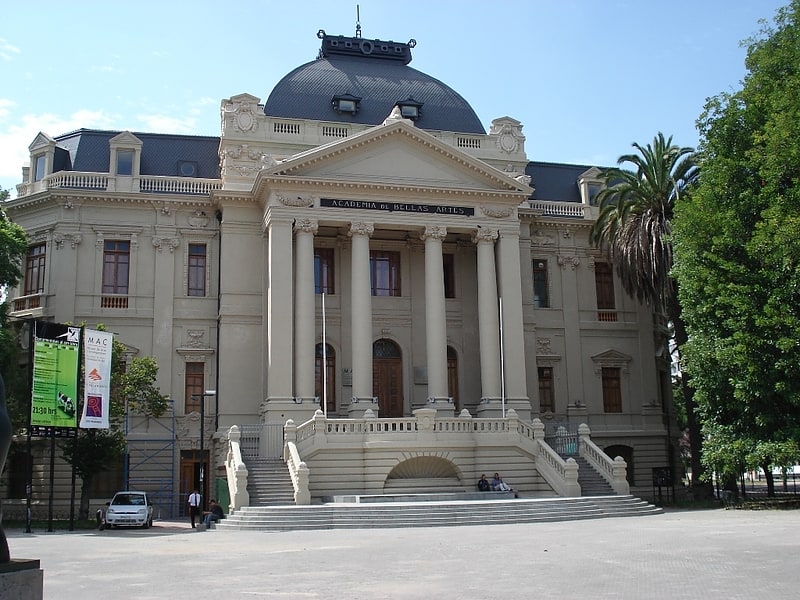
Also known as: Museo de Arte Contemporáneo de Santiago
Museum in Santiago, Chile. The Santiago Museum of Contemporary Art is located in Santiago, Chile. It is one of the city's major museums, created in 1947, and is run by the University of Chile Faculty of Arts. Since 2005, the museum has had two separate sites: MAC Parque Forestal and MAC Quinta Normal Park.
The museum specializes in modern and contemporary art and focuses on the development, study, and dissemination of modern art through exhibitions and other activities. It also concentrates on protecting the cultural heritage that forms its collection, which is made up by over 2,000 pieces and files.
One of the museum's sites is located in Parque Forestal behind the Chilean National Museum of Fine Arts (Spanish: Museo Nacional de Bellas Artes) and sharing its grand Palacio de Bellas Artes building. The other site is located in Quinta Normal Park.[33]
Address: Avenida Matucana 464, 8350453 Santiago (Santiago Centro)
Parque del Recuerdo
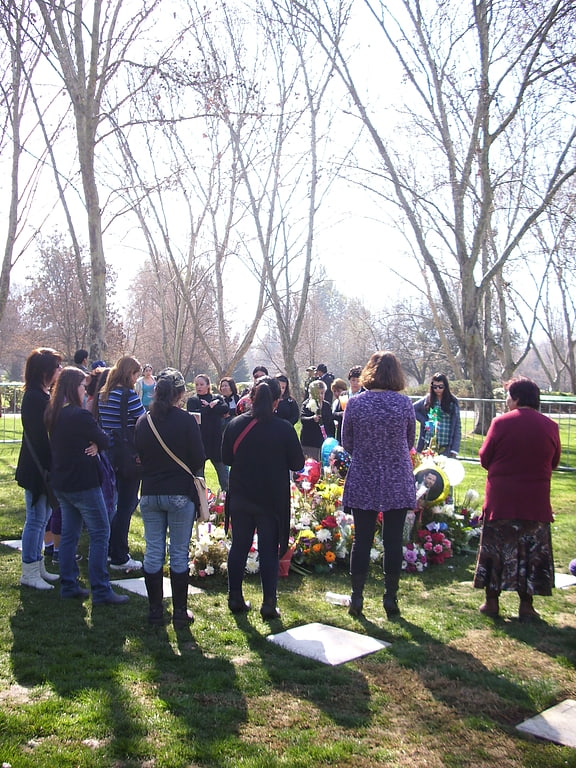
Parque del Recuerdo is a group of cemetery parks located in Santiago, Chile.[34]
O'Higgins Park
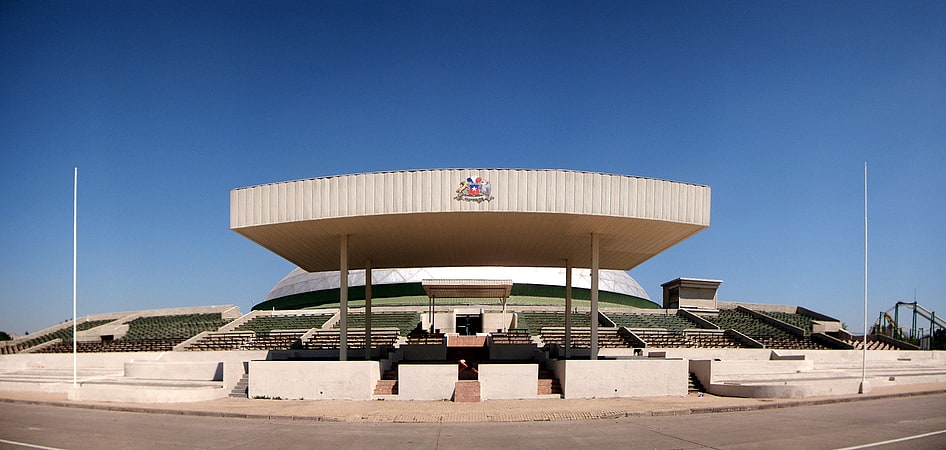
Also known as: Parque O'Higgins
Park in Santiago, Chile. O'Higgins Park, with an area of around 75 hectares, is Santiago, Chile's second largest public park after Metropolitan Park. It is located in the center of the capital, in the Santiago Commune.
The park, named after Bernardo O'Higgins (one of Chile's founding fathers), is a popular place for families to visit during weekends and holidays, especially during the national holiday on September 18, when a number of fondas and ramadas —traditional places for dancing, eating and drinking— are open to the public for a few days.
Between 2011 to 2019, O’Higgins Park hosted the annual music festival Lollapalooza Chile.[35]